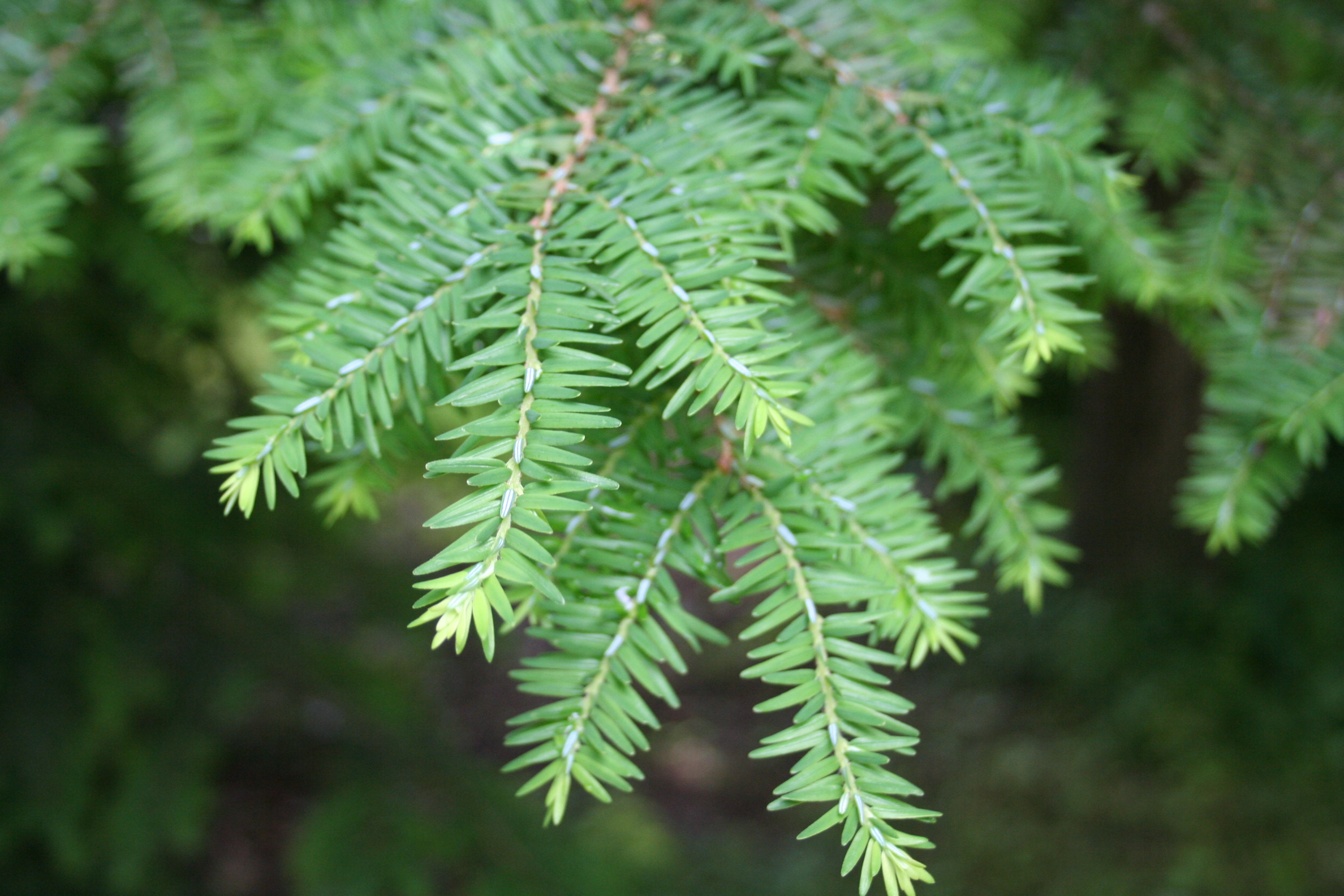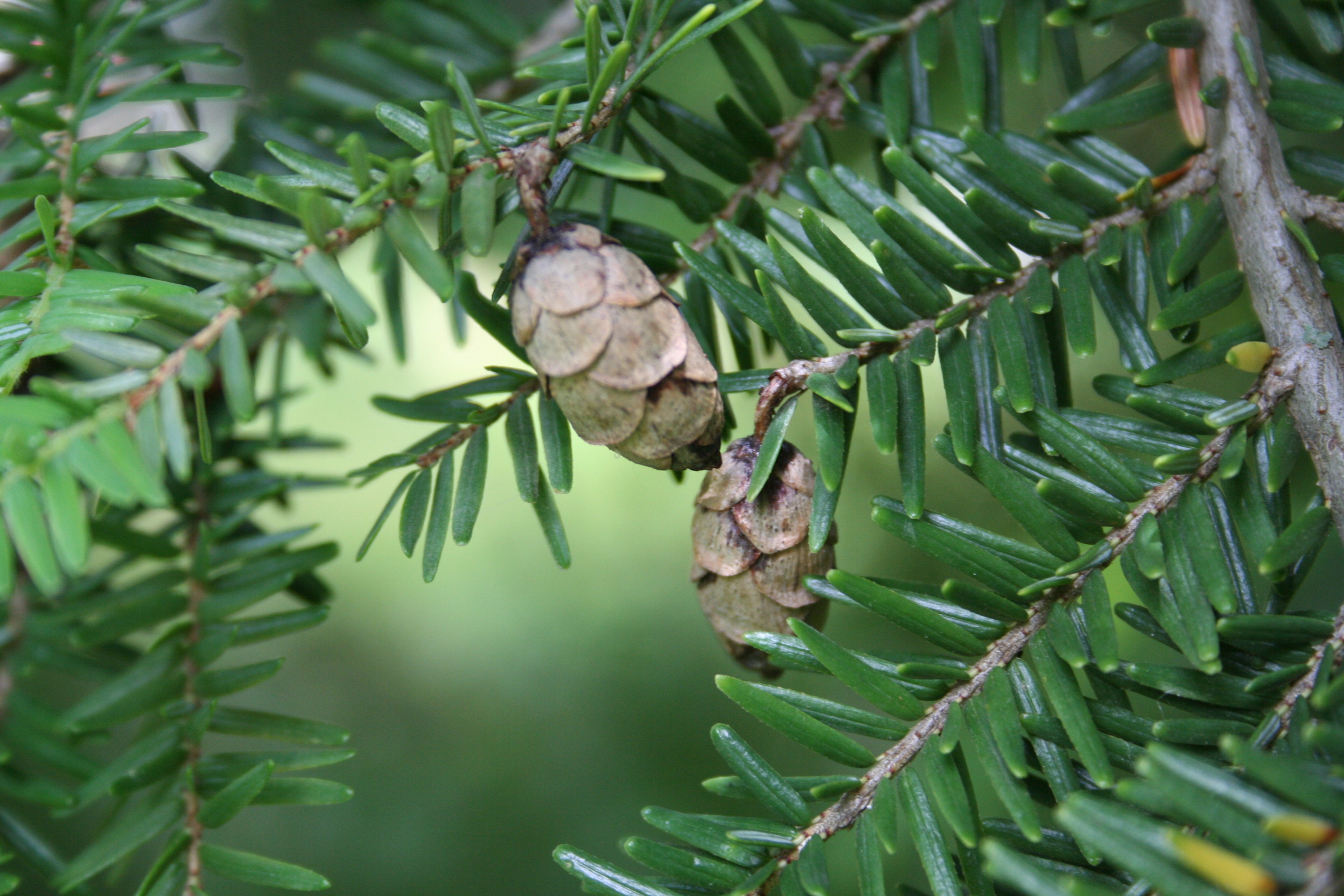Hemlock, Eastern
Tsuga Canadensis, Coniferous
Eastern hemlock is a shade-tolerant native of the eastern US growing from Minnesota to Maine and south to the higher elevations of Georgia. The tree is not abundant in Nebraska but is occasionally found in protected landscape plantings, especially where a shade-tolerant evergreen is desired.

Where To Grow

Size at Maturity
| Tree Height | Tree Spread |
| 15-30' | 10-15' |
Tree Characteristics
Hemlock generally has a broadly conical and open crown with feathery branches that often droop at the ends. Over time its naturally open habit becomes more pronounced. The needles are flat, ½ to 1” long, dark green above and glaucous below giving it a two-toned appearance. The needles are also two-ranked (opposite each other on the same plane) and somewhat resemble Douglas fir. The twigs are yellow-brown and densely pubescent. The bark is brownish, scaly and fissured. Seed cones are ovoid, 1.5-2.5 cm long, borne near the branch tips, hanging.
Wildlife Benefits
Eastern hemlock stands are considered important as shelter and cover for white-tailed deer and other wildlife species, such as turkey, ruffed grouse, and others.
Utilization
The lumber is used for general construction and crates. Because of its unusual power of holding spikes, it is also used for railroad ties.
Additional Considerations
Hemlock is susceptible to winter burn and wind-throw when planted on open sites. Although the tree can live for centuries in native woods, it is becoming decimated by the Hemlock woolly adelgid in the southern part of its range. The adelgid is a small, white, sap-sucking insect native to Japan.
Numerous cultivars of Eastern hemlock have been developed, including compact shrubs, dwarfs, weeping and upright types, variegated in color, and graceful trees. The tree can be used as a specimen, screen, or in group planting. It can be pruned over time into a formal evergreen hedge.
Related species
Although there are other hemlock species in North America and also in Asia, they’re not considered suitable for planting in Nebraska.
Interesting Facts
American Indians used the cambium as the base for bread and soups or mixed it with dried fruit and animal fat for pemmican. Natives and white settlers also made tea from hemlock leaves, which have a high vitamin C content.

